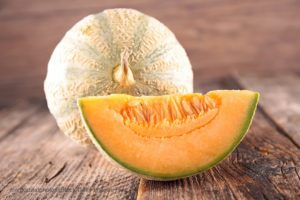This past summer and fall, there was a nationwide outbreak of Salmonella Typhimurium linked to melons grown at Chamberlain Farms in Indiana. The outbreak began in August 2012 and ended in October 2012. The initial announcement was made on August 17, 2012. The final case count per state is as follows: Alabama (25), Arkansas (6), Florida (1), Georgia (13), Illinois (36), Indiana (30), Iowa (9), Kentucky (66), Maryland (1), Michigan (8), Minnesota (2), Mississippi (7), Missouri (17), Montana (1), New Jersey (2), North Carolina (5), Ohio (5), Oklahoma (1), Pennsylvania (2), South Carolina (4), Tennessee (8), Texas (2), Virginia (1), and Wisconsin (9).
 Attorney Fred Pritzker, who is representing victims in this outbreak, said, “consumers are not to blame in this outbreak. Ready-to-eat foods such as cantaloupe should not present a food poisoning hazard. The industry must make changes in how melons are grown and processed to stop these deadly outbreaks.”
Attorney Fred Pritzker, who is representing victims in this outbreak, said, “consumers are not to blame in this outbreak. Ready-to-eat foods such as cantaloupe should not present a food poisoning hazard. The industry must make changes in how melons are grown and processed to stop these deadly outbreaks.”
In August, 141 people reported being ill with the outbreak strain of Salmonella Typhimurium in 20 states. The illness onset dates ranged from July 7 to August 4, 2012. Two people in Kentucky died from their infections. Investigation efforts of the USDA and CDC linked the bacteria to a farm in southwestern Indiana, which was later identified as Chamberlain Farms. The Kentucky Division of Laboratory Services isolated the outbreak strain from two cantaloupes collected from a retail store in Kentucky.
On August 22, Chamberlain Farms Produce of Owensville, Indiana recalled cantaloupe grown on its farm. The product was shipped initially to Indiana, Kentucky, Missouri, Tennessee, Ohio, Illinois, and Wisconsin, although further distribution was likely.
On August 23, 2012, the outbreak was updated. At that time, 178 people were ill in 21 states. The 37 new cases came from Alabama, Georgia, Illinois, Indiana, Kentucky, Massachusetts, Minnesota, Mississippi, Missouri, New Jersey, Ohio, Texas, and Wisconsin. On August 28, 2012, environmental samples collected from Chamberlain Farms found Salmonella Typhimurium with a DNA fingerprint that matches the outbreak strain.
The outbreak continued to grow. On August 30, 2012, 204 people were reported sickened with the outbreak strain of the bacteria. The age range of patients was from less than 1 year to 100 years old. Fifty-two percent of patients were sick enough to be hospitalized.
The investigation expanded in August, finding a new bacteria linked to Chamberlain Farms. Salmonella Newport sickened 30 people in 7 states. Geographic distribution of the patients suggested a connection between this outbreak and the Salmonella Typhimurium outbreak linked to Chamberlain Farms. The FDA found the outbreak strain of Salmonella Newport on cantaloupe collected from Chamberlain Farms. The CDC combined the two investigations. Officials also found the outbreak strain of Salmonella Newport on watermelon from Chamberlain Farms.
By September, the case count grew to 270 ill patients from 26 states. That includes those sickened with Salmonella Typhimurium and Salmonella Newport. Three deaths had been reported in Kentucky. The melons were sold at Kroger stores in the south and midwest United States, along with Jay C, Dillons, Baker’s, Gerbes, Fry’s, Food4Less, Foodsco and Smith’s. Watermelons from Chamberlain Farms was sock at Schnucks.
In October, the CDC released their final update. There were 228 people infected with the outbreak strain of Salmonella Typhimurium, and 33 people infected with the outbreak strain of Salmonella Newport in 24 states. Ninety-four patients were hospitalized, and three deaths were reported.
In their investigation, the FDA found poor sanitation in the Chamberlain Farms packing shed, a buildup of dirt and grime on food contact surfaces, pooling water on the floor of the shed, and equipment that was difficult to clean. The water supply line to the cleaning “dump tank” was leaking and rusty. Moreover, garbage was allowed to accumulate in the area. The webbed surface of cantaloupe creates ideal hiding places for bacteria.




